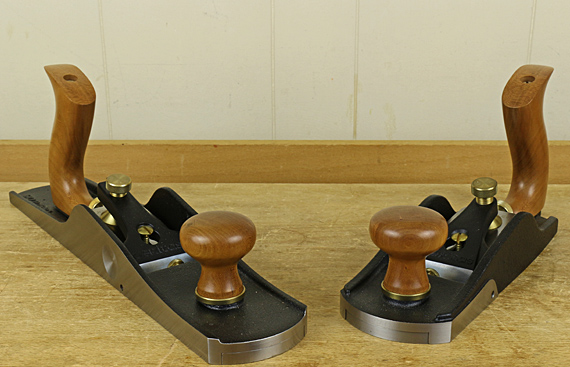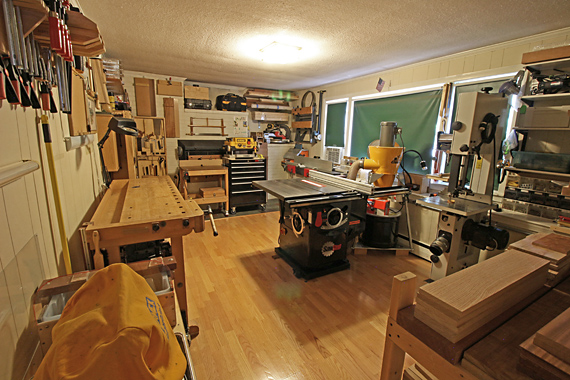
Lee Valley and Lie-Nielsen both use a 12° bed for their bevel-up (BU) bench planes. At least for smoothing planes, I think there are better options. I addressed this issue in a 2010 post but now would like to add additional reasoning.
Let’s start with the issue of attack angle.
One of the advantages of BU planes is the attack angle (the angle between the wood and the leading surface of the blade) can be altered simply by changing the sharpening angle of the final microbevel. There is no need to change the frog and/or create a large back bevel (a large bevel on the normally flat side of the blade) as with a bevel-down plane. The attack angle is a key factor in how a plane functions, especially to control tear out.
In a bevel-up plane with a 12° bed, to achieve a 50° attack angle, a good all-around angle for a smoother, the sharpening angle must be 38°. (Note that all of the sharpening angles in this discussion are only the final, steepest microbevel, which is what actually interacts with the wood.) A 55° attack, a good choice to manage most figured woods, would require a 43° sharpening angle. A 60° attack, which is about as steep as you can go before the plane acts more like a scraper but is nonetheless useful for difficult woods, requires a 48° sharpening!
Alternatively, let’s consider a 22° bed for the bevel-up smoothing plane. Much lower sharpening angles can be used. For example, a 33° sharpening angle yields a 55° attack, which is a nice setup with an A-2 blade. The 60° attack requires a still-manageable 38° sharpening. On the other hand, if you want a lower attack, you could sharpen at 28° or 30°, such as with an O-1 blade, to yield a 50-52° attack. If slightly lower attack angles suit you, a 20° bed is a good, versatile compromise.
So, a 20-22° bed angle in a bevel-up smoothing plane allows you to a create a good range of attack angles without the excessively high sharpening angles required with a 12° bed.
For a BU jack plane, the case for a steeper bed is less compelling, though still interesting. A 12° bed with a 33° sharpening – typical for an A-2 blade that would often be found in a jack – gives a 45° attack, which many woodworkers consider to be a good all-around choice for a jack. Still, a 15° bed would increase the versatility of the plane in creating slightly higher attack angles without having to increase the sharpening angle too much.
To summarize the main point: a bevel-up smoothing plane with a 12° bed requires excessively high sharpening angles to achieve the very helpful range of attack angles that is one of the key advantages to this type of plane.
Much more to come on this topic in upcoming posts. Those excessively high sharpening angles produce several disadvantages. Furthermore, the lower 12° bed is a disadvantage in itself, and actually lacks a traditionally-cited advantage.

